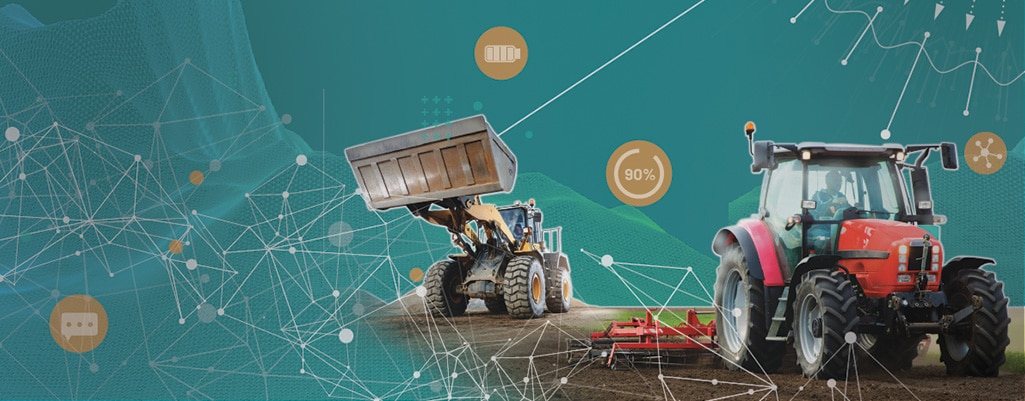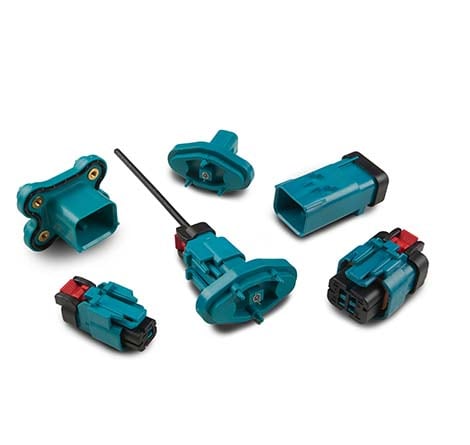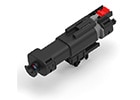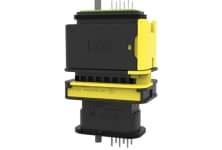Contact Us
Engineering the Next Generation of Heavy-Duty Vehicles
Willing to turn your ideas into reality? Fill in this form, and our data connectivity specialists will contact you.
The key considerations for designing data connections within industrial and commercial vehicles.
Download NowA New World of Data Connectivity
Years ago, tractors, construction equipment, trucks, and buses had simple electrical systems that might have included electrical starting and a basic lighting package.
Today, ECUs, joysticks, fuel-efficient engines, LED lights, and CAN systems are standard equipment. In the future, more and more advanced functionality will be required with the proliferation of infotainment, safety, productivity, and in-vehicle network capabilities.
The need to protect sensitive electrical systems from vibration, moisture, dust, dirt, salt and airborne particles has never been greater. Whether outright performance or reducing total costs is your priority, we have a solution. You can count on us to support you from your system design to your product selection.
Our Product Portfolio
Sealed and Robust Portfolio
Our purpose-built products all provide severe vibration and mechanical shock resistance, protection from moisture and debris, and high-temperature ranges required in industrial and commercial vehicles, whether in-cabin or on the chassis. They also allow for easy serviceability in the field.
They can adapt to virtually any use, including RADAR/LiDAR, cameras, telematics units, antennas, onboard diagnostics, infotainment applications, heads-up displays, and instrument clusters.
Unsealed Portfolio
Our unsealed connectors provide connectivity solutions for infotainment and multimedia modules, cameras, consumer ports, instrument panel clusters, and display units according. This portfolio can be used in combination with various protocols in sealed applications.
The unsealed connectors can be used in cabin applications in industrial and commercial vehicles.
Our Resources
Get Insights
Learn about the trends our specialists are seeing across the market
-
Ethernet’s Importance in Enabling Trends
In industrial and commercial vehicles and machinery, designers must consider incorporating Ethernet systems in their designs now to be able to fully meet customer demands in the future.
-
The Ethernet in Autonomous Driving
The autonomous driving trend has long since gone beyond passenger vehicles. Ever more commercial and industrial vehicles are looking into introducing advanced functionalities.
-
Engineering Ethernet into Commercial Vehicles
Enabling advanced, data-heavy functionality means getting comfortable with integrating Ethernet into a mixed architecture.
-
Data Connectivity in Harsh Environments
Ensuring high-speed data transmission requires OEM designers to think more about components, placement and the impact of environmental conditions early in design.
-
A Changing Vehicle Landscape
It's time to look at Ethernet solutions for heavy-duty industrial and commercial vehicle applications that can transmit high-speed data with low latency, handling up to 1 Gb/sec of data.
-
Next-Generation Infotainment Technology
With multi-function sensors and miniaturized connectors, embedded antennas and lightweight wire, engineers can build next-generation infotainment applications that enable smarter experiences for drivers, passengers, and pedestrians.
INFOTAINMENT. SAFETY. NETWORKS.
Our products have been developed so that manufacturers of commercial vehicles – such as trucks, buses and off-highway applications – and marine craft are able to design the sophisticated systems that their customers are now demanding.
INFOTAINMENT
In addition to the entertainment and communication systems that provide driver satisfaction and enjoyment, this also includes access to information about systems that allow the driver to monitor and pilot the vehicle.
SAFETY
For any fleet manager, ensuring the safety of their employees is key. High speed in-vehicle communications enables a wide range of safety features – from lane departure warning, autonomous emergency braking and adaptive cruise control through to newer technologies such as lane keeping assistant, pedestrian detection, and even autonomous driving.
NETWORKS
This is the backbone of the vehicle, the underpinning infrastructure which makes all communication possible. Within the vehicle, from one vehicle to another, or between the vehicle and another location – whether that’s the owner’s depot or control centre, or even the manufacturer. The network provides for the reliability of the information transmission, making sure that the driver is fully informed about every aspect of his vehicle, at all times.
Our components have travelled up into space, and down into the deepest oceans – so whatever environment you need to operate in, you can be confident we’re up to the challenge.



 e
e
 e
e
 e
e

 e
e
 e
e
 e
e
 e
e
 e
e
 e
e
 e
e
 e
e



